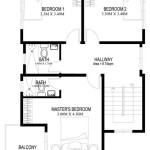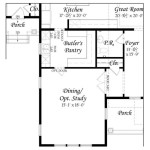What Is a Plantation House?
A plantation house, a term deeply entwined with the history of slavery and colonialism, refers to a large dwelling that served as the residence of the owner and manager of a plantation. These grand homes, often showcasing architectural styles prevalent in their respective regions, stood as symbols of wealth and power derived from the exploitation of enslaved labor. Plantation houses represent a complex legacy, reflecting an era marked by both economic prosperity and egregious human rights violations.
Architectural Features and Styles
Plantation houses varied in size and architectural style according to their geographic location, the wealth of the owner, and the prevailing architectural trends of the time. Some common features include:
- Elevated Porches: These provided shade and ventilation, crucial in hot climates.
- Large Windows: Offering light and ventilation in the main living areas.
- Multiple Chimneys: Indicating multiple fireplaces within the home, a sign of comfort and luxury.
- Formal Gardens: These were often a testament to the owner's wealth and social status, showcasing imported plants and meticulous landscaping.
Specific architectural styles found in plantation houses include:
- Greek Revival: Characterized by simple, symmetrical designs, often featuring columns and pediments.
- Colonial Revival: Recalling the architectural styles of the 18th century, with emphasis on classical details and symmetry.
- Antebellum: Homes built before the American Civil War, often showcasing elaborate ornamentation and grand proportions.
The Role of Plantation Houses in the History of Slavery
Plantation houses were inextricably linked to the institution of slavery. The wealth generated through the forced labor of enslaved individuals funded the construction and maintenance of these opulent homes. The houses themselves served as a physical manifestation of the power dynamics of the plantation system. Their grandeur and comfort stood in stark contrast to the harsh living conditions of the enslaved people who worked the land.
Beyond their role as opulent residences, plantation houses also served as centers of social activity, hosting grand gatherings and parties. They were often adorned with decorative objects and artwork, showcasing the wealth and status of the plantation owner and further reinforcing the hierarchical social order of the time.
Preservation and Interpretation of Plantation Houses
Today, many plantation houses stand as historical landmarks, offering a window into a complex and often uncomfortable past. However, the interpretation and preservation of these sites have become subjects of debate. Some argue that these houses should be preserved as historical monuments, showcasing the architectural styles and historical context of the era. Others contend that focusing solely on the architectural beauty of plantation houses without acknowledging the realities of slavery risks romanticizing and minimizing the suffering endured by enslaved people.
It is increasingly recognized that the interpretation of plantation houses requires a critical exploration of the full story, including the narratives of those who were enslaved and the brutal realities of the plantation system. This means acknowledging the painful history of slavery, its impact on both the enslaved and the society at large, and the enduring legacies of racism and inequality that continue to shape the world today.

What Is A Plantation House S Guide By Tallbox

Visit Plantation Homes Of The South Audley Travel Us

What Is A Plantation House S Guide By Tallbox

What Is A Plantation The Dark History Of South S Most Beautiful Homes

What Is A Plantation House S Guide By Tallbox

Antebellum Architecture Wikipedia

What Is A Plantation House S Guide By Tallbox

Historic Southern Plantation Homes

Plantations In Louisiana New Orleans Company

Antebellum Architecture A Brief Look At Style Homes
Related Posts








